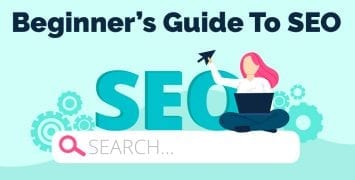SEO is a massive field. Even internet marketing professionals have a hard time keeping track of every single strategy. Here are five SEO errors which are very common. Before you publish any new content, run through this checklist to make sure you’re not making any simple mistakes:
1. Anchor-Less Links
Writing blog posts can be a time-consuming process. Making a mistake is easy to do if you’re in a rush. Before you post, make sure all of your links actually connect to the proper destination.
An href link in html without anchor text will be considered cloaked. Cloaking is when different content or URL is presented to humans and search engines. Some common examples of cloaking include:
- Showing users a page of images but showing HTML text to search engines
- Inserting text or keywords into a page only due to a search engine request
Unfortunately, cloaking is against Google’s Webmaster Guidelines. Even accidental cloaking can result in search penalties and even a ban.
2. Lists (the Bad Kind)
Organized lists in a blog post like this one are fine. In fact, lists are often a great way to grab the reader’s attention. But there’s a different type of list you’ll want to watch out for.
Matt Cutts from Google first identified these other types of lists back in 2013, and the info is still relevant today. Also known as keyword stuffing, these “bad lists” contain a long string of phrases with no elaboration. Basically, these lists come across as gibberish.
3. Too Much Formatting
Bolding, italicizing and other formatting have their place in content. But too much formatting can actually hurt your ranking.
SEO expert Brian Chang conducted an experiment with his pages. He bolded tons of words in his content. The result? His ranking dropped. When he removed the excessive formatting, his ranking recovered.
Keep your formatting as natural as possible. Bolding tends to work best in headings and sub-headings. While bolding and italicizing words in the content can add emphasis, overdoing it can result in a ranking drop.
4. Bad Links
You can’t control who links to your site. That’s okay. Google doesn’t penalize you if penalized sites link to yours.
But be careful who you link to. Google will penalize you if you link out to penalized sites. Google’s Matt Cutts made this very clear way back in 2009, and the idea still applies today. “Google trusts sites less,” he said, “when they link to spammy sites and bad neighborhoods.”
Most sites don’t intentionally set out to link to troublesome sites. Here are a few strategies to help your site stay in the clear:
- Review your site’s external links on a regular basis. Make sure the linked content hasn’t changed for the worse.
- Don’t allow trackbacks
- Only like out to primary or authoritative sources
Be careful — but don’t turn your site into a dead end for links. Quality outbound links help search engines see your site as an authority.
5. Confusing Nofollow and Noindex
There are plenty of legitimate reasons you might need to hide some pages of your site from search engines. Some common reasons include:
- Hiding paywall content
- Hiding back-end content
- Preventing issues with duplicate content
- Split testing
When blocking your own content, always use the noindex tag. Never use the nofollow tag.
The nofollow tag prevents search engines from passing PageRank through the links. You’re telling search engines to disregard all the PageRank that flows into the noindexed page.
Final Thoughts
SEO can be complicated and complex. Even if you understand the basics, it can be easy to overlook some of the finer details. The five issues above are common errors even SEO veterans make from time to time. Fortunately, they’re also easy to fix once you know what to look for.
What small SEO strategies have made a big difference for your site? Share your tips below:




